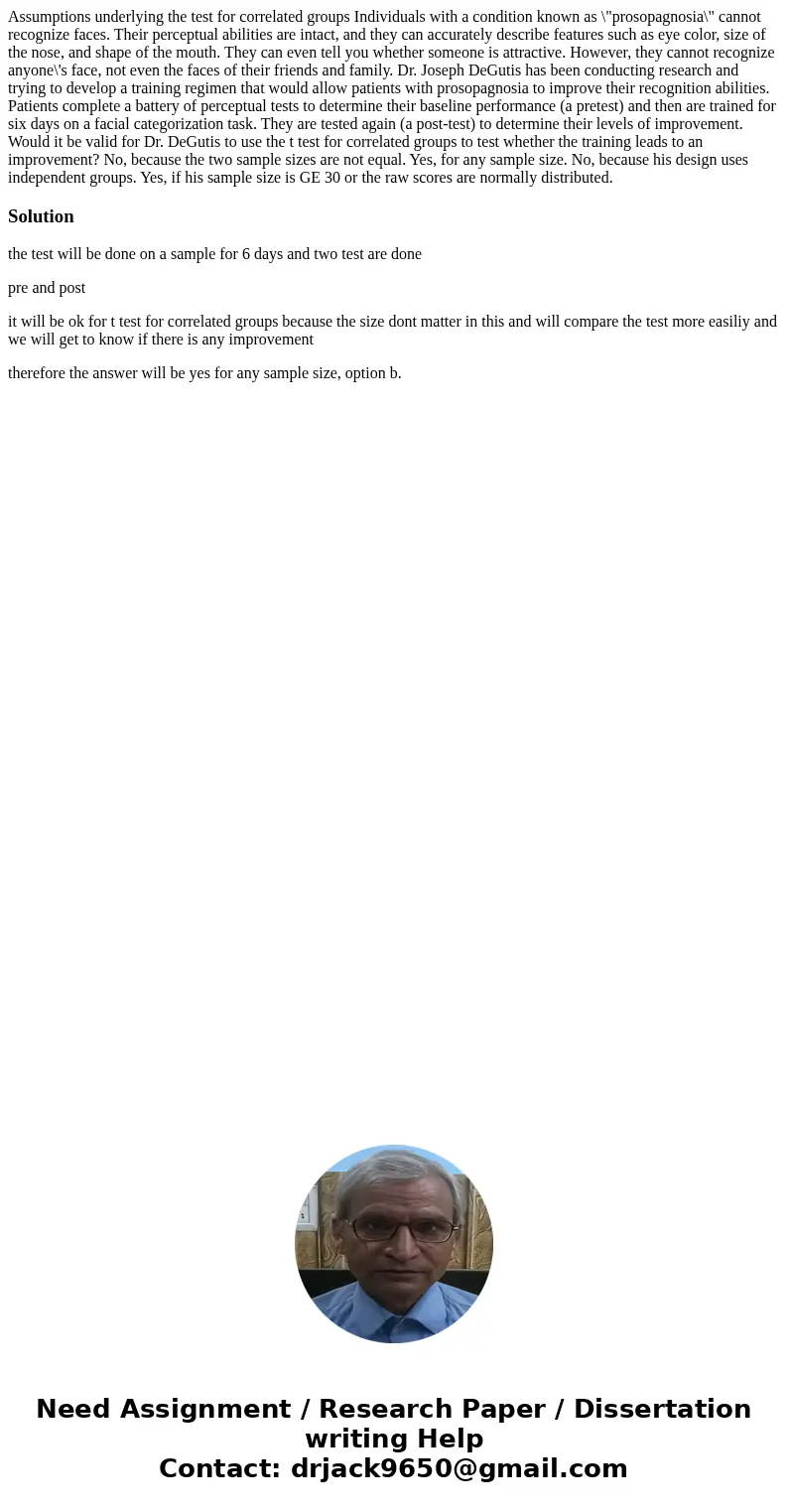Assumptions underlying the test for correlated groups Indivi
Assumptions underlying the test for correlated groups Individuals with a condition known as \"prosopagnosia\" cannot recognize faces. Their perceptual abilities are intact, and they can accurately describe features such as eye color, size of the nose, and shape of the mouth. They can even tell you whether someone is attractive. However, they cannot recognize anyone\'s face, not even the faces of their friends and family. Dr. Joseph DeGutis has been conducting research and trying to develop a training regimen that would allow patients with prosopagnosia to improve their recognition abilities. Patients complete a battery of perceptual tests to determine their baseline performance (a pretest) and then are trained for six days on a facial categorization task. They are tested again (a post-test) to determine their levels of improvement. Would it be valid for Dr. DeGutis to use the t test for correlated groups to test whether the training leads to an improvement? No, because the two sample sizes are not equal. Yes, for any sample size. No, because his design uses independent groups. Yes, if his sample size is GE 30 or the raw scores are normally distributed.
Solution
the test will be done on a sample for 6 days and two test are done
pre and post
it will be ok for t test for correlated groups because the size dont matter in this and will compare the test more easiliy and we will get to know if there is any improvement
therefore the answer will be yes for any sample size, option b.

 Homework Sourse
Homework Sourse